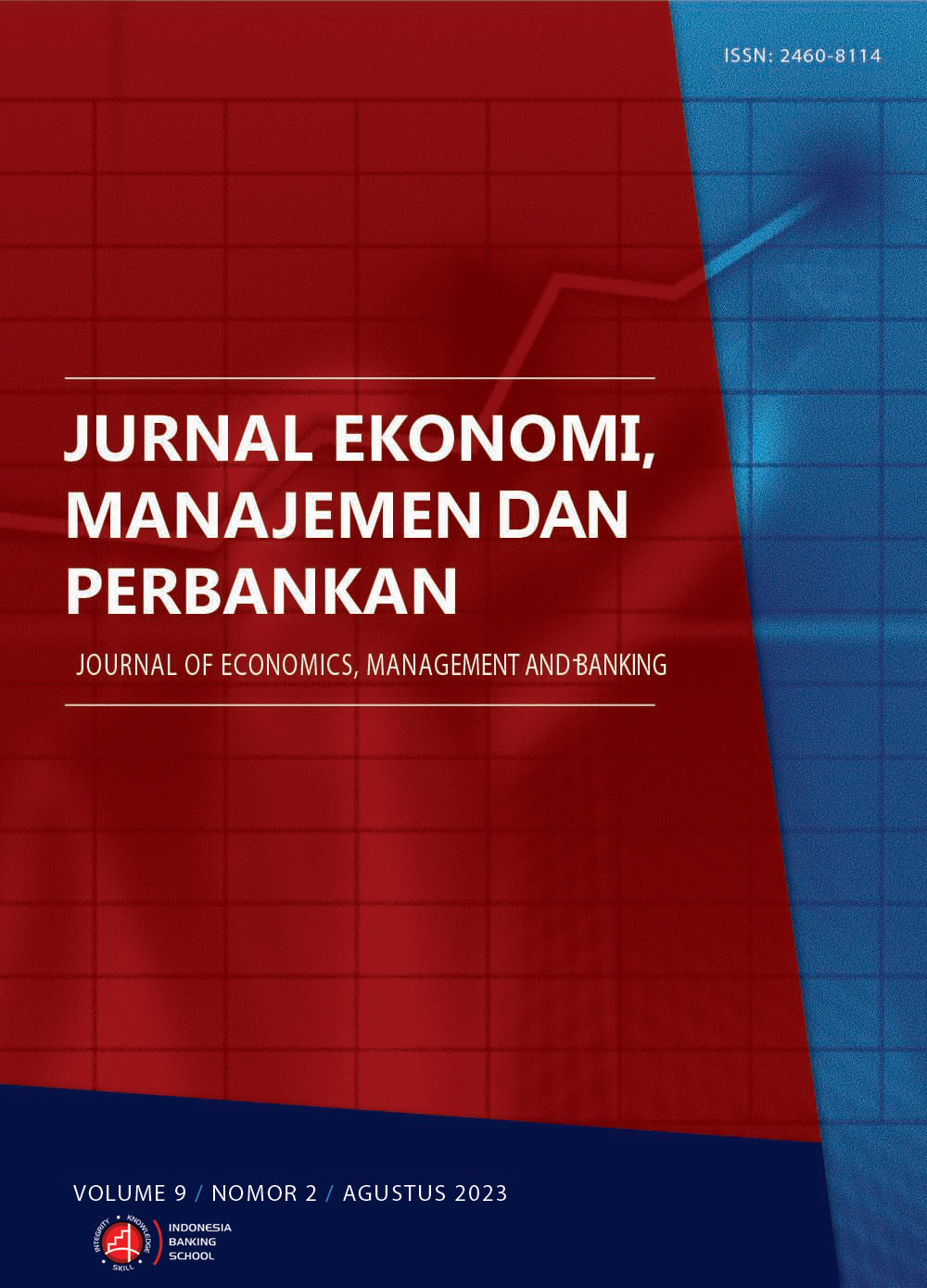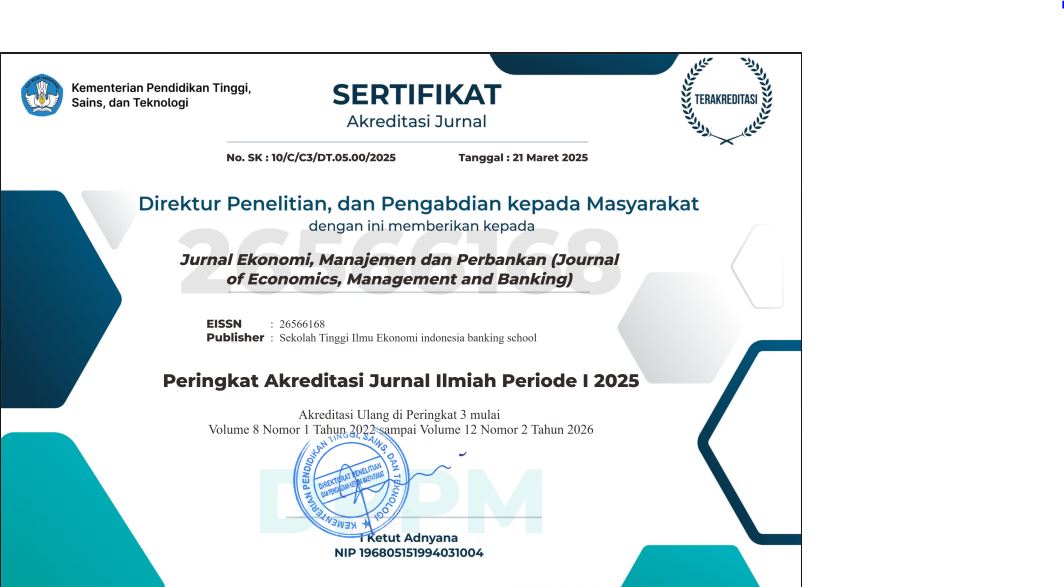Pengaruh Pemasaran Media Sosial pada Brand Equity dan Brand Attitude yang mempengaruhi Purchase Intention pada aplikasi Shopee
DOI:
https://doi.org/10.35384/jemp.v9i2.400Keywords:
Keywords: Firm Created Communication, User Generated Content, Brand Equity, Brand Attitude, Purchase Intention, ShopeeAbstract
The purpose of this study is to examine the influence of Firm Created Communication and User Generated Communication on Brand Attitude, then test Firm Created Communication, User Generated Communication, and Brand Attitude on Brand Equity. Next to test Brand Attitude and Brand Equity against Purchase Intention. The exogenous variables in this study are Firm Created Communication and User Generated Communication. While the endogenous variables in this study are Brand Attitude, Brand Equity and Purchase Intention. This research was conducted at the Shopee marketplace. The sample in this study used 50 respondents using the Shopee marketplace and the method used was Partial Least Square (PLS). The results of the conclusions of this study are as follows: 1) Firm Created Communication has a significant positive effect on Brand Equity, 2) User Generated Content does not have a significant positive effect on Brand Equity, 3) Brand Attitude has a significant positive effect on Brand Equity ,4) Firm Created Communication has no significant effect on Brand Attitude. 5) User Generated Content has a significant positive effect on Brand Attitude, 6) Brand Equity has a significant positive effect on Purchase Intention, 7) Brand Attitude has a significant effect.
References
Abdillah, W., dan Jogiyanto. 2015. Partial Least Square (PLS) : Alternatif Structural Equation Modeling (SEM) dalam Penelitian Bisnis. Yogyakarta : Andi.
Andriani, M. (2017). The Influence of Store Image, Service Quality, Private Label Brand Image, Perceived Risk, and Price Consciousness on Purchase Intention. Indriani, 9(1).
Berthon, P., & Campbell, C. (2015). Ad Lib : When Customers Create the Ad.
Broyles, S. A. (2010). Brand equity’s antecedent/consequence relationships in cross-cultural settings. Journal of Product & Brand Management.
Burmann, & Arnhold, U. (2008). User generated branding: state of the art of research. Marketing Management.
Chang, H. H., Wang, Y., & Yang, W. (2009). The impact of e-service quality, customer satisfaction and loyalty on e-marketing : Moderating effect of perceived value. 3363.
Cobb-walgren, C. J., Ruble, C. A., & Donthu, N. (2013). Brand Equity, Brand Preference , and Purchase Intent Brand Equity , Brand Preference , and Purchase Intent. April 2015, 37-41.
Coleman, J. N.,. (2011). Produced by Liquid Exfoliation of Layered Materials. 331(February), 568-572.
Duan, W., Gu, B., & Whinston, A. B. (2008). Do online reviews matter ? An empirical investigation of panel data. 45, 1007-1016.
Filieri, R. (2016). What makes an online consumer review trustworthy? Annals of Tourism Research, 58, 46-64. https://doi.org/10.1016/j.annals.2015.12.019
Frost, H., Lamb, S. E., Doll, H. A., Carver, P. T., & Stewart-brown, S. (2004). Randomised controlled trial of physiotherapy compared with advice for low back pain. September, 2-7. https://doi.org/10.1136/bmj.38216.868808.7C
Ghozali, Imam. (2014). Structural Equation Modeling, Metode Alternatif dengan Partial Least Square (PLS). Edisi 4. Semarang : Badan Penerbit Universitas Diponegoro.
Ha, H. Y., & Janda, S. (2014). The effect of customized information on online purchase intentions. Internet Research, 24(4), 496-519. https://doi.org/10.1108/IntR-06-2013-0107
Hair, J. F., Anderson, R. E., Babin, B. J., & Black, W. C. (2010). Multivariate data analysis: A global perspective (Vol. 7): Upper Saddle River, NJ: Pearson.
Keller, K.L. and Lehmann, D.R. (2003), “How Do Brands Create Value?”, Marketing Management, Vol. 12 No. 3, pp. 27-31.
Kim, A. J., & Ko, E. (2012). Do social media marketing activities enhance customer equity ? An empirical study of luxury fashion brand ☆. Journal of Business Research, 65(10), 1480-1486. https://doi.org/10.1016/j.jbusres.2011.10.014
Lee, S. (2000). An Examination of Selected Marketing Mix Elements and Brand Equity. 28(2), 195-211.
Li, C., Bernoff, J., & Bernoff, J. (2008). Groundswell: Winning in a world transformed by social technologies. Boston, MA: Harvard Bus. Press.
Macinnis, D. J., & Jaworski, B. J. (1989). Information Processing from Advertisements : Toward an Integrative Framework. 53(October), 1-23.
Malhotra, Naresh. (2014). Basic Marketing Research. Pearson Education: England.
Mangold, W. G., & Faulds, D. J. (2009). Social media : The new hybrid element of the promotion mix. https://doi.org/10.1016/j.bushor.2009.03.002
Manno, C. S.. A. (2006). Successful transduction of liver in hemophilia by AAV-Factor IX and limitations imposed by the host immune response. 12(3), 342-348.
Murphy, Z. &. (1993). Brain temperature and subjective emotional experience. Handbook of emotions.
Nuri, Wulandari (2022). The Influence of Personal Brand Trust on Community Leaders Who Are Also Entre- preneurs in DKI Jakarta on Overall Brand Equity. 4309.
Regensburger, A., Bersch, C., Miri, M., Onishchukov, G., & Christodoulides, D. N. (2012). Parity - time synthetic photonic lattices. 4-8. https://doi.org/10.1038/nature11298
Reza Jalilvand, M., & Samiei, N. (2012). The effect of electronic word of mouth on brand image and purchase intention. Marketing Intelligence & Planning, 30(4), 460-476. https://doi.org/10.1108/02634501211231946
Schiffman, L.G. and L.L. Kanuk. (2000). Consumer Behavior, Seventh Edition. Prentice Hall International Company, New Jersey.
Schivinski, B., & Dabrowski, D. (2015). The impact of brand communication on brand equity through Facebook. Journal of Research in Interactive Marketing, 9(1), 31-53. https://doi.org/10.1108/JRIM-02-2014-0007
Schivinski, B., & Dabrowski, D. (2016). The effect of social media communication on consumer perceptions of brands. Journal of Marketing Communications, 22(2), 189-214. https://doi.org/10.1080/13527266.2013.871323
Sidali, K. L., Schulze, H., & Spiller, A. (2009). The impact of online reviews on the choice of holiday accommodations. Information and Communication Technologies in Tourism, May 2016, 87-98. https://doi.org/10.1007/978-3-211-93971-0_8
Sijoria, C., Mukherjee, S., & Datta, B. (2018). Impact of the antecedents of eWOM on CBBE. Marketing Intelligence and Planning, 36(5), 528-542. https://doi.org/10.1108/MIP-10-2017-0221
Sulthana, A. N., & Vasantha, S. (2019). Influence of electronic word of mouth eWOM on purchase intention. International Journal of Scientific and Technology Research, 8(10), 1-5.
Sugiyono. (2018). Metode Penelitian Kombinasi (Mixed Methods). Bandung: CV Alfabeta.
Wardani, D., & Gustia, R. R. (2017). Analysis of Brand Experience, Brand Satisfaction and Brand Trust Relationship to Brand Attachment. Jurnal Ilmu Manajemen & Ekonomika, 9(1), 59. https://doi.org/10.35384/jime.v9i1.20
Wiedemann, D. G., Haunstetter, T., & Pousttchi, K. (2008). Analyzing the Basic Elements of Mobile Viral Marketing - An Empirical Study. 75-85. https://doi.org/10.1109/ICMB.2008.41
Yan, Q., Wu, S., Wang, L., Wu, P., Chen, H., & Wei, G. (2016). E-WOM from e-commerce websites and social media: Which will consumers adopt? Electronic Commerce Research and Applications, 17, 62-73. https://doi.org/10.1016/j.elerap.2016.03.004
Yoo B.; Donthu, N. (2001). Developing and Validating a Multi-dimensional CBBE scale. Journal of Business Research, 10(1), 61-67. https://doi.org/10.1016/S0148-2963(99)00098-3
Downloads
Published
Issue
Section
License
Copyright (c) 2023 Deni Wardani

This work is licensed under a Creative Commons Attribution-NonCommercial-ShareAlike 4.0 International License.
Authors who publish with this journal agree to the following terms:
- Authors retain copyright and grant the journal right of first publication with the work simultaneously licensed under a Creative Commons Attribution License that allows others to share the work to acknowledge the work's authorship and initial publication in this journal.
- Authors can enter into separate, additional contractual arrangements for the non-exclusive distribution of the journal's published version of the work (e.g., post it to an institutional repository or publish it in a book) with an acknowledgment of its initial publication in this journal.
- Authors are permitted and encouraged to post their work online (e.g., in institutional repositories or on their website) before and during submission. It can lead to productive exchanges and earlier and greater citation of published work.















